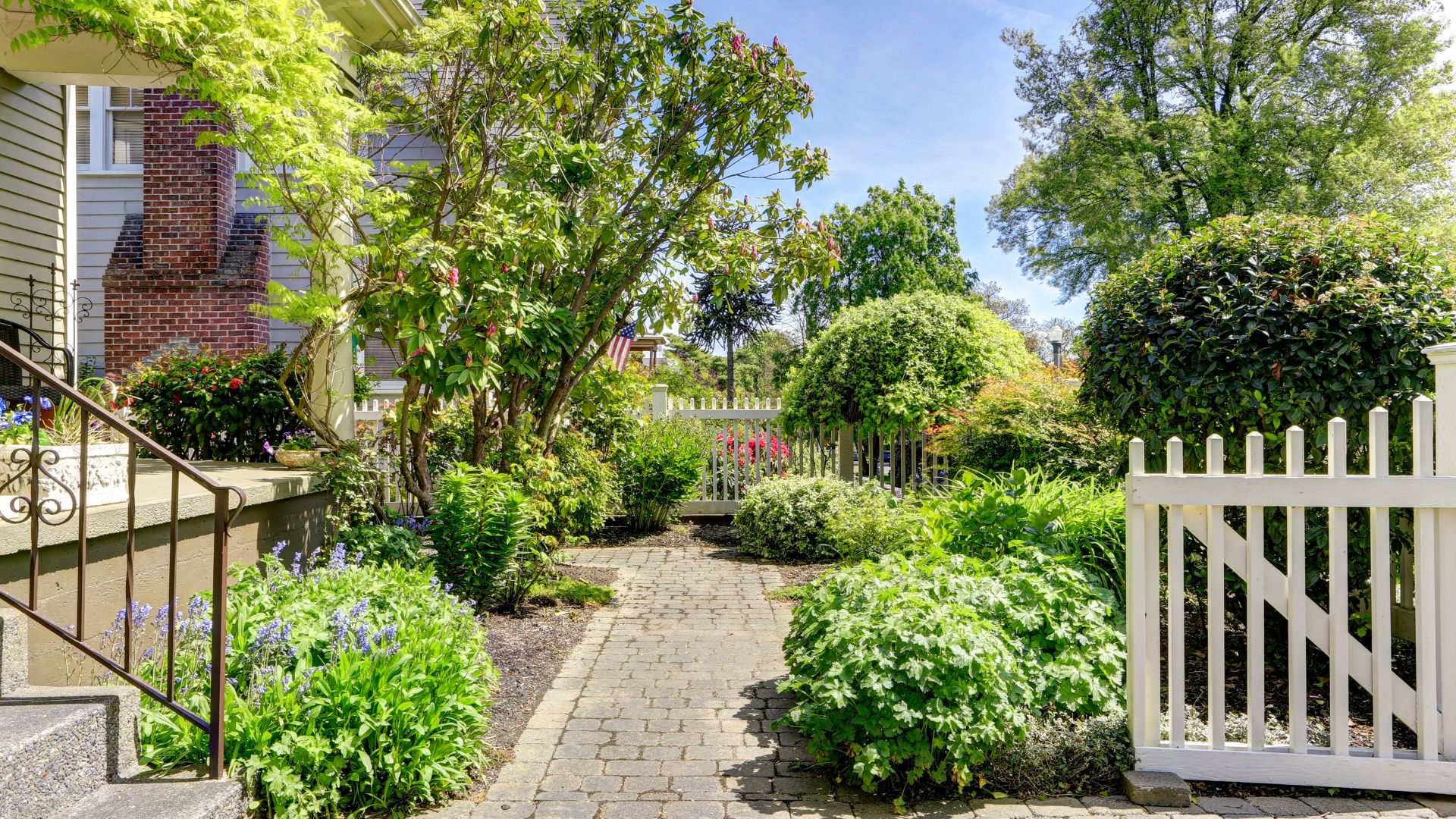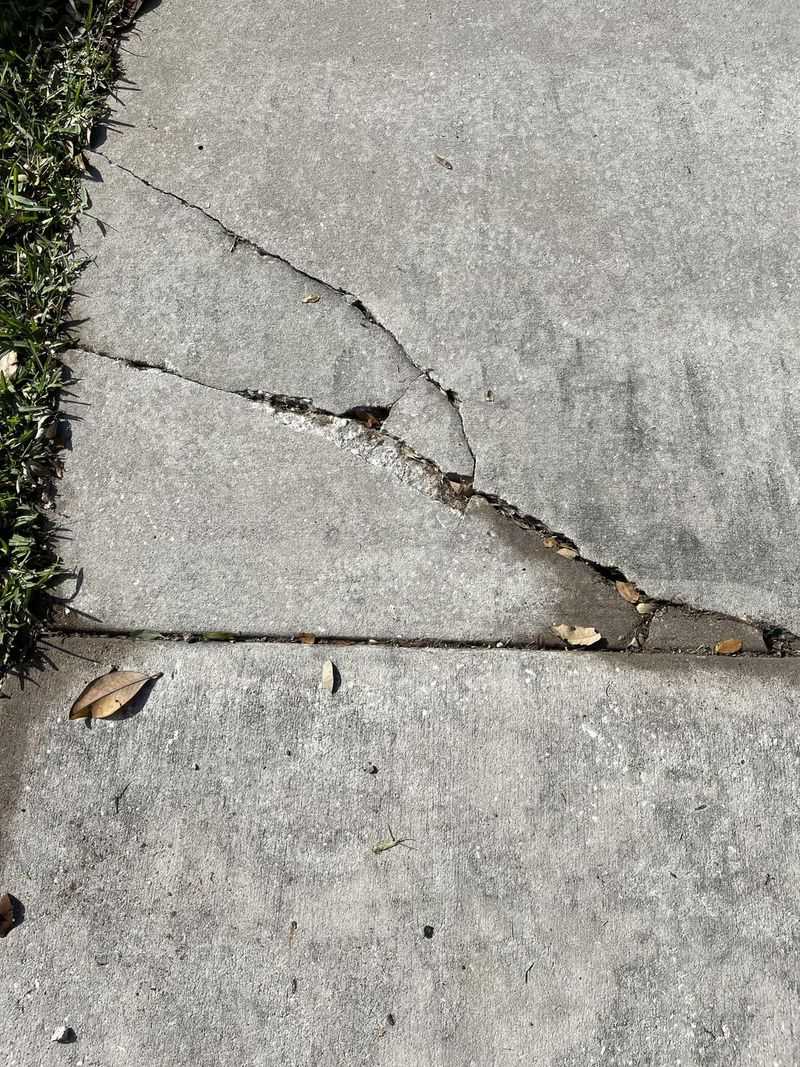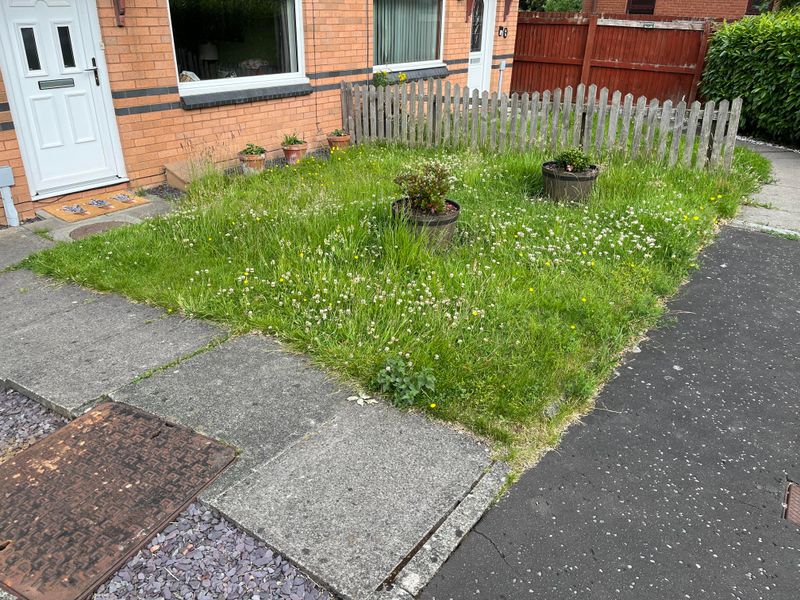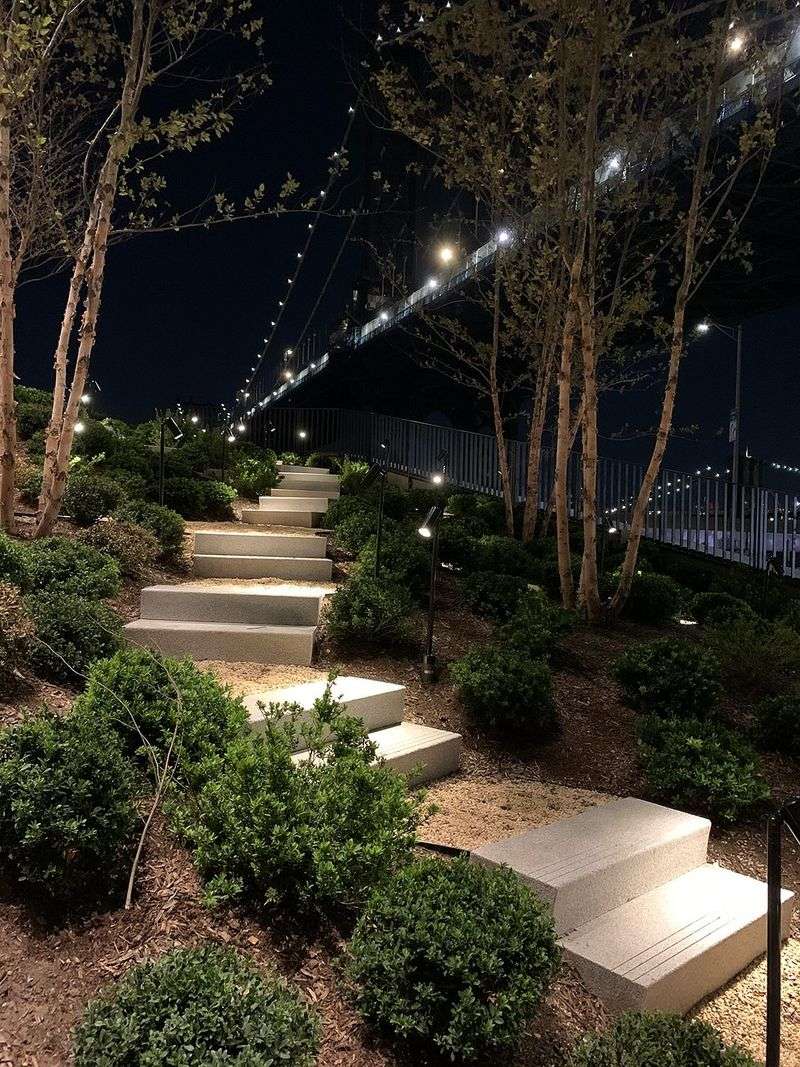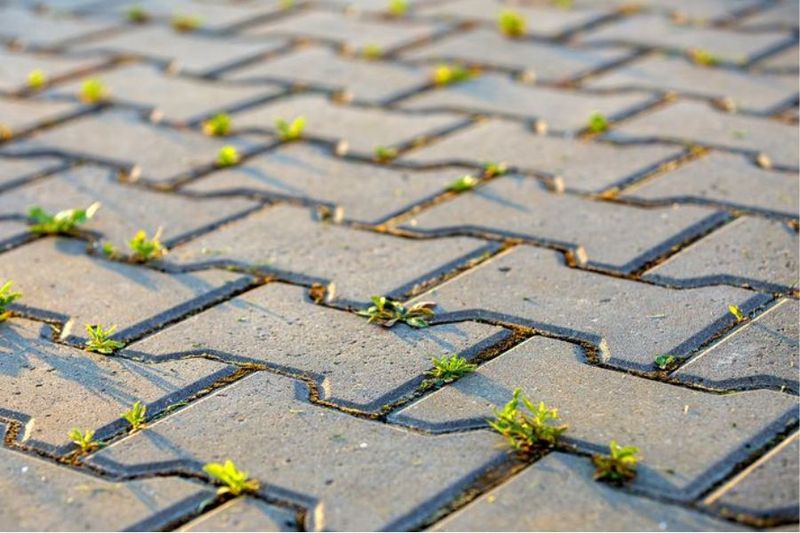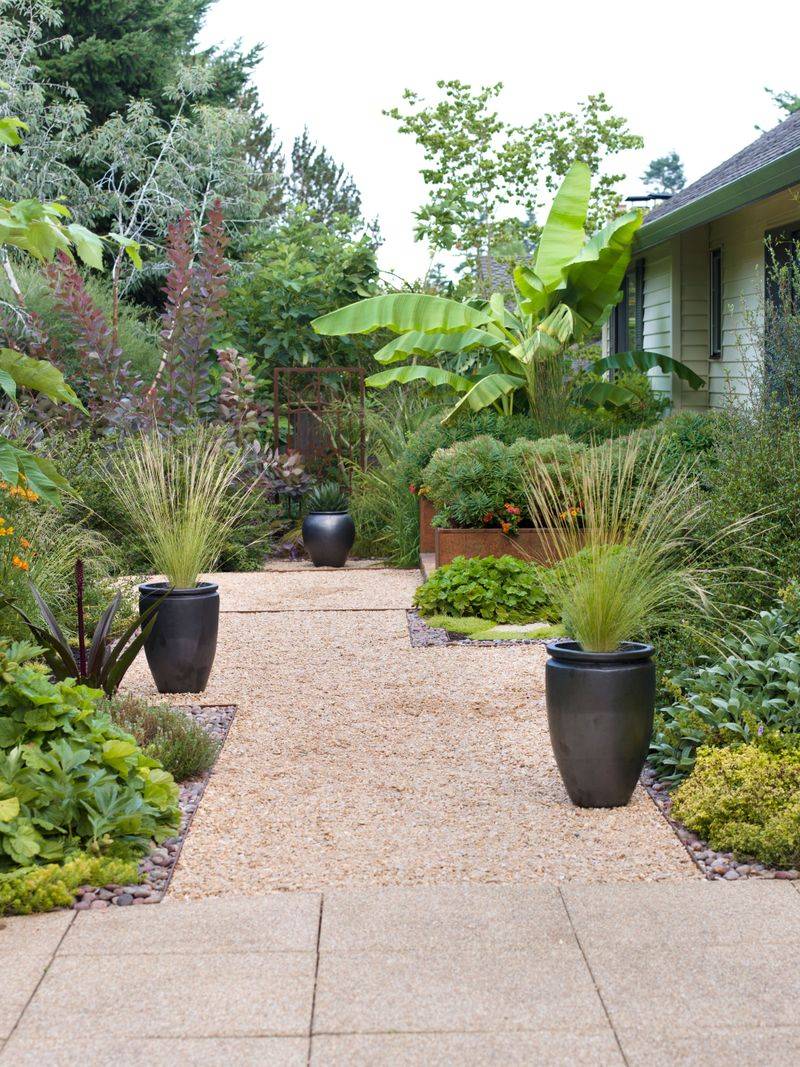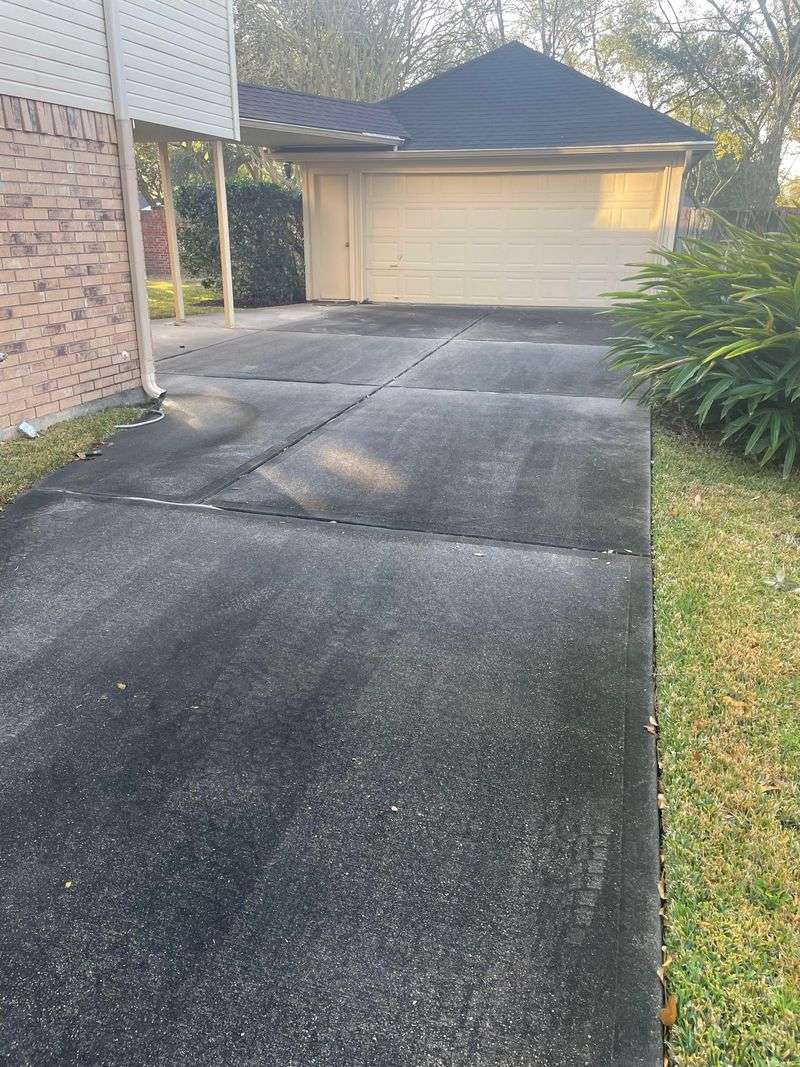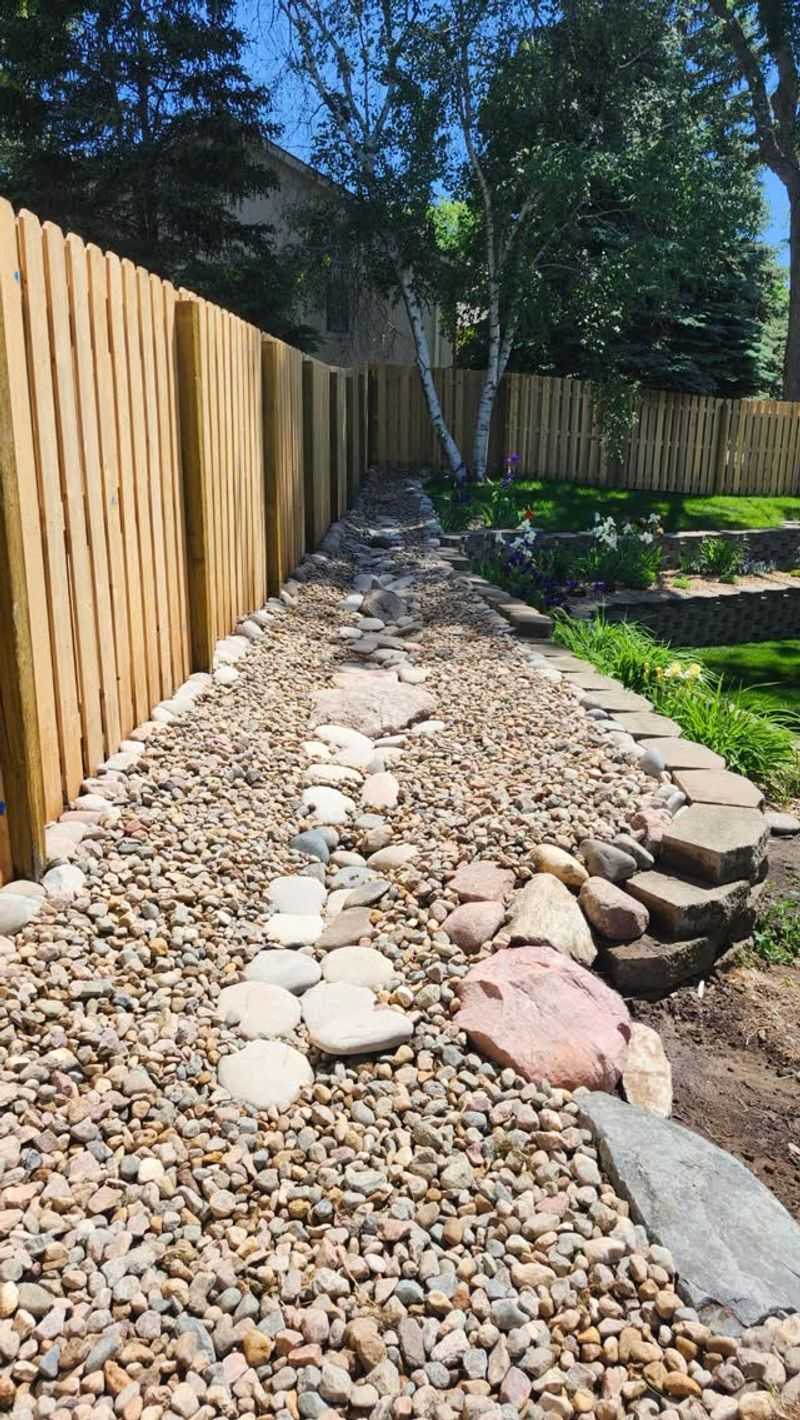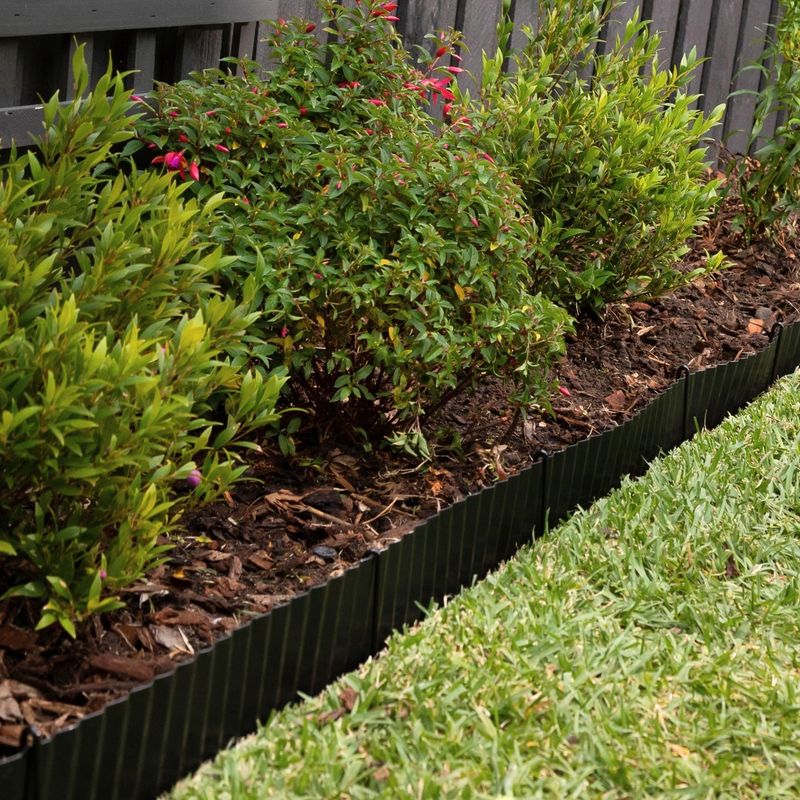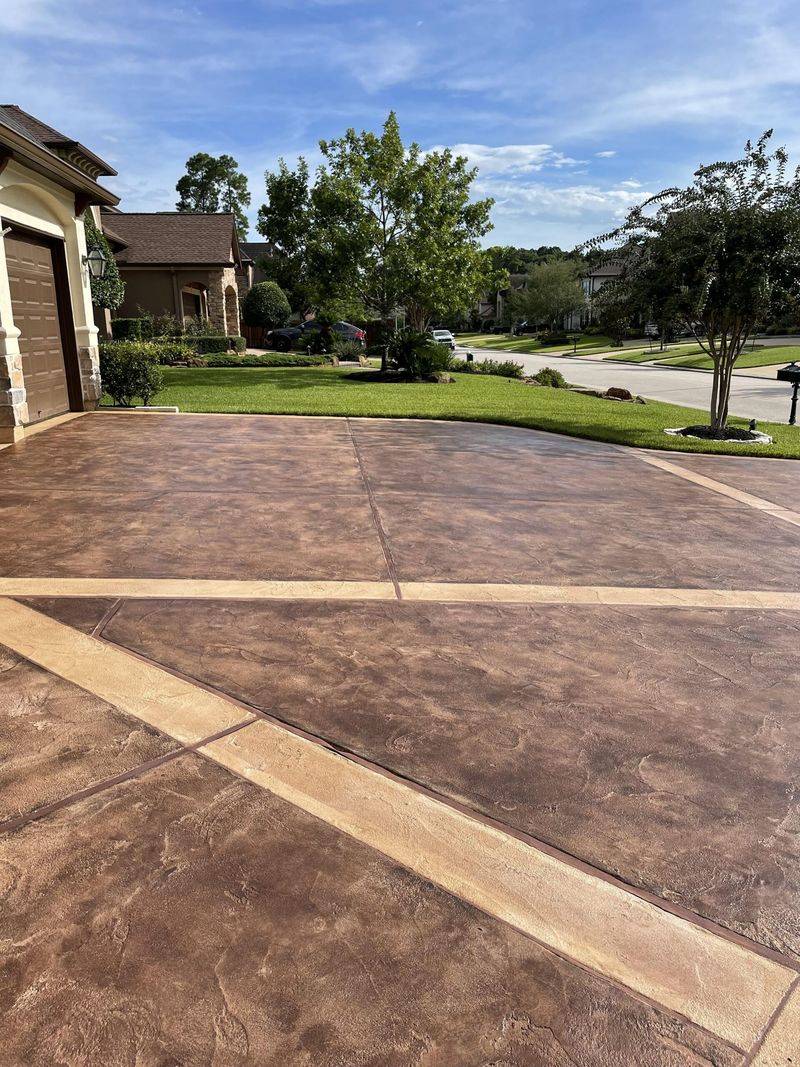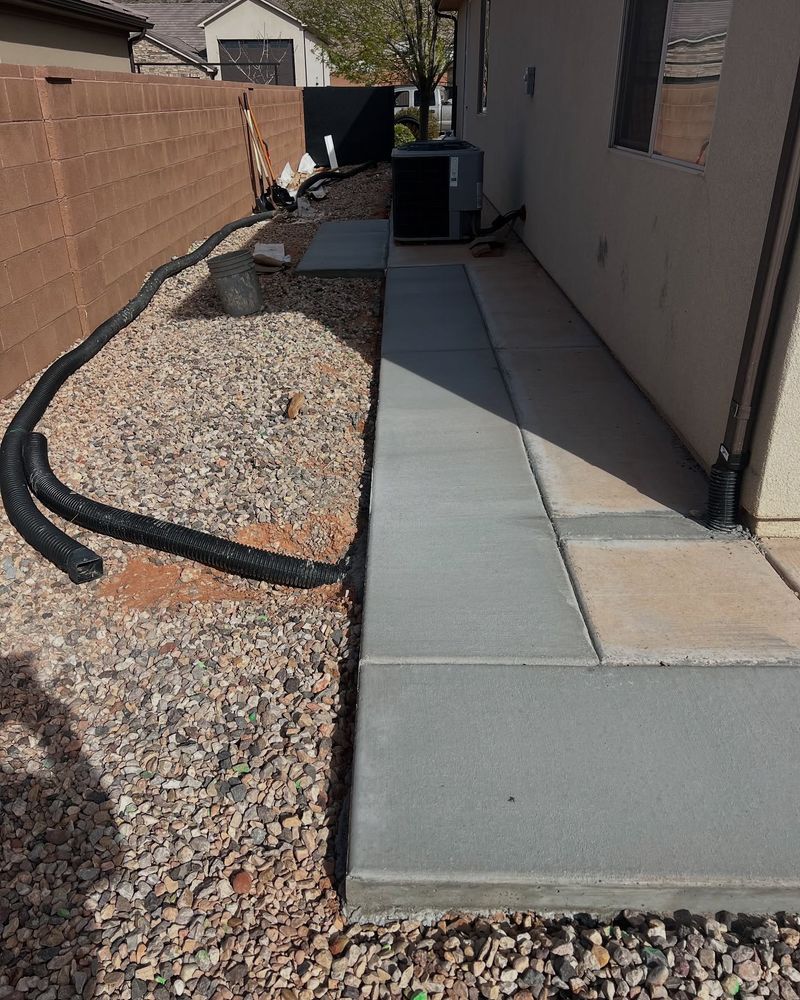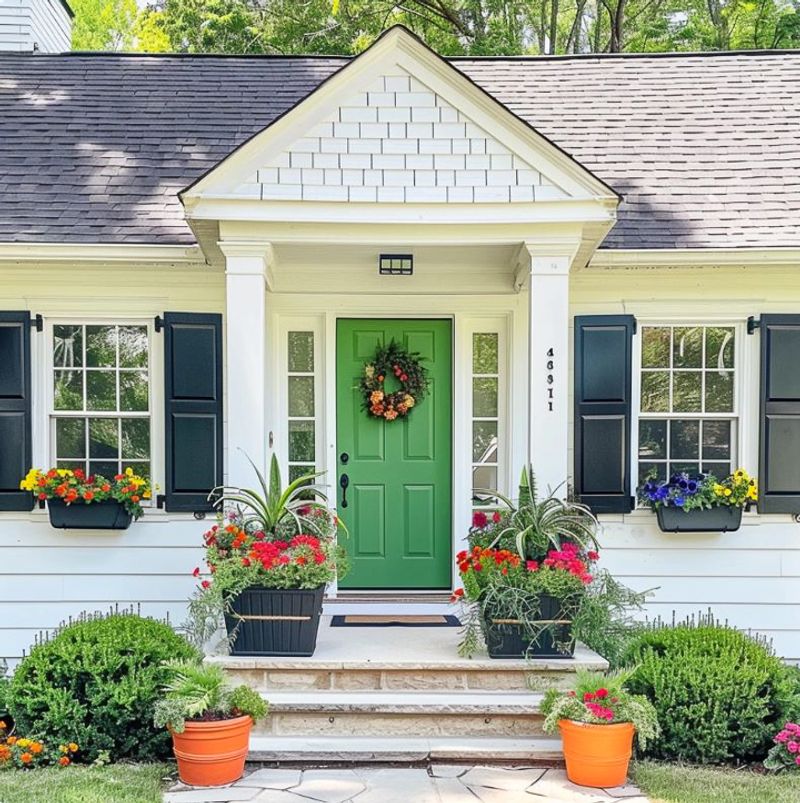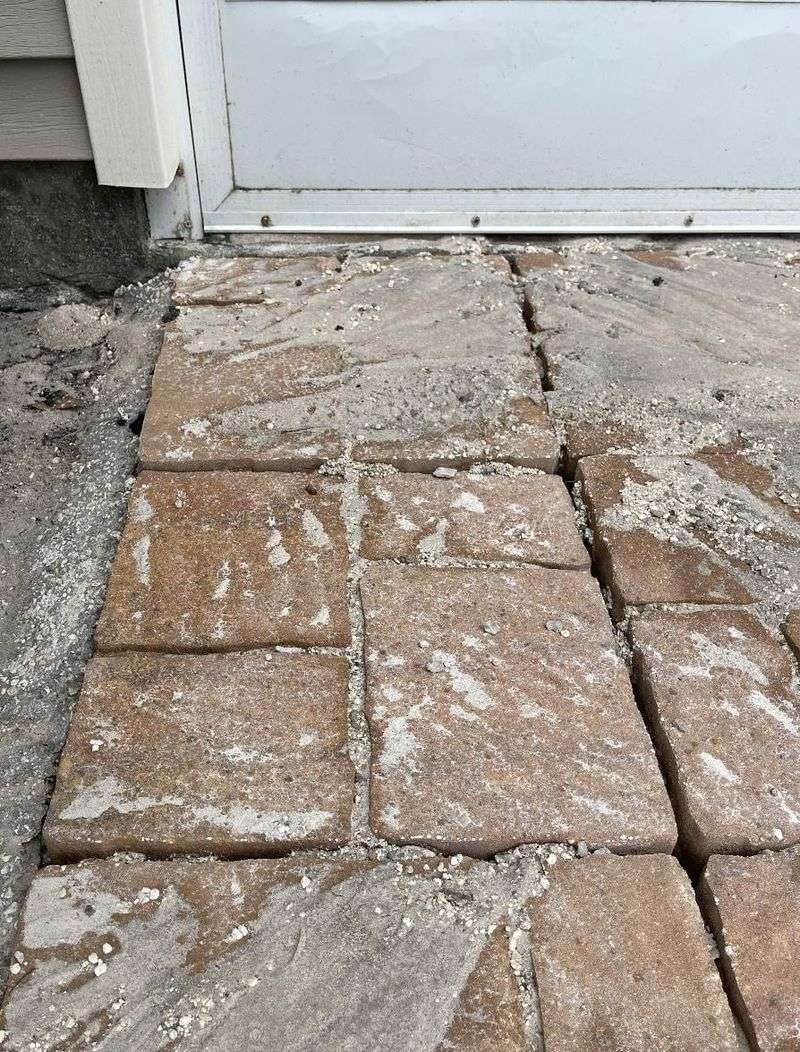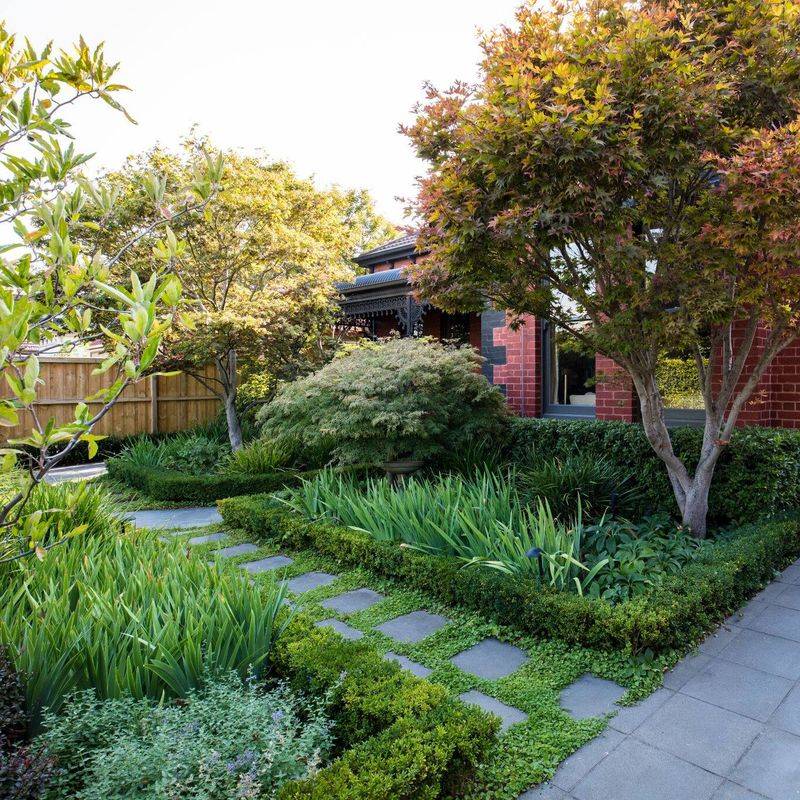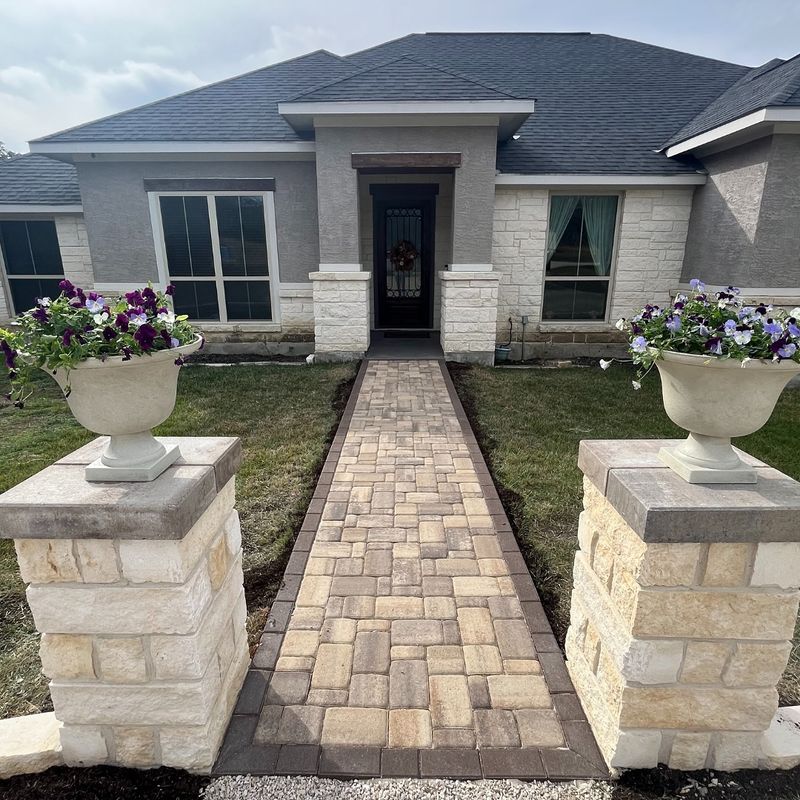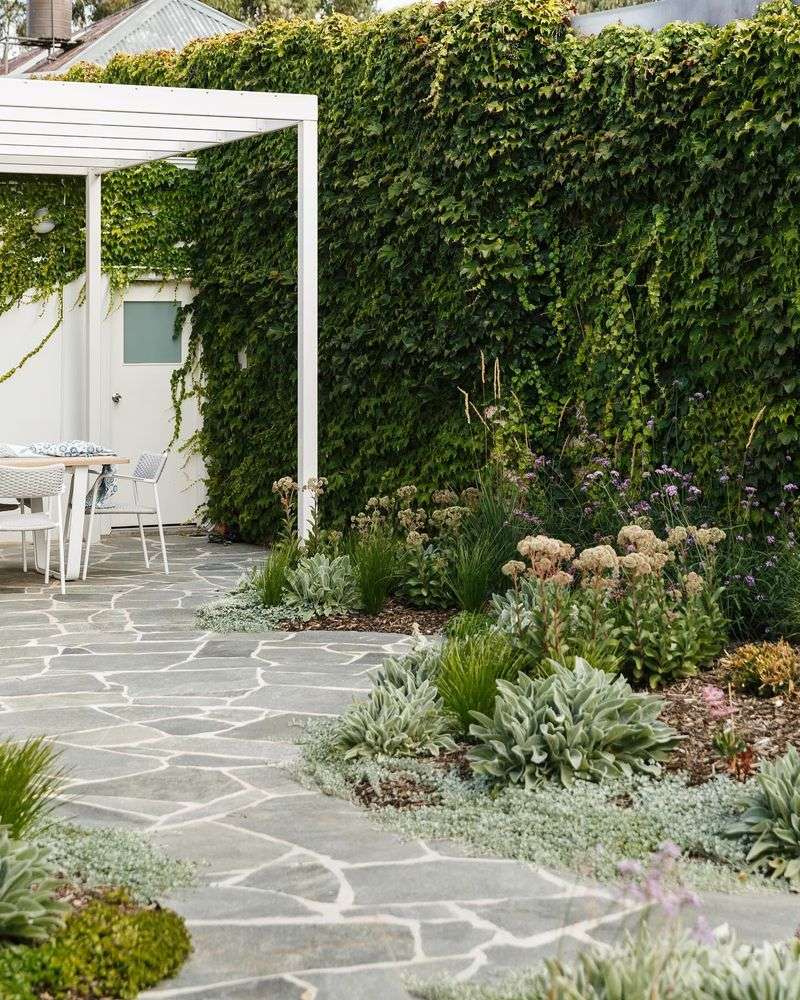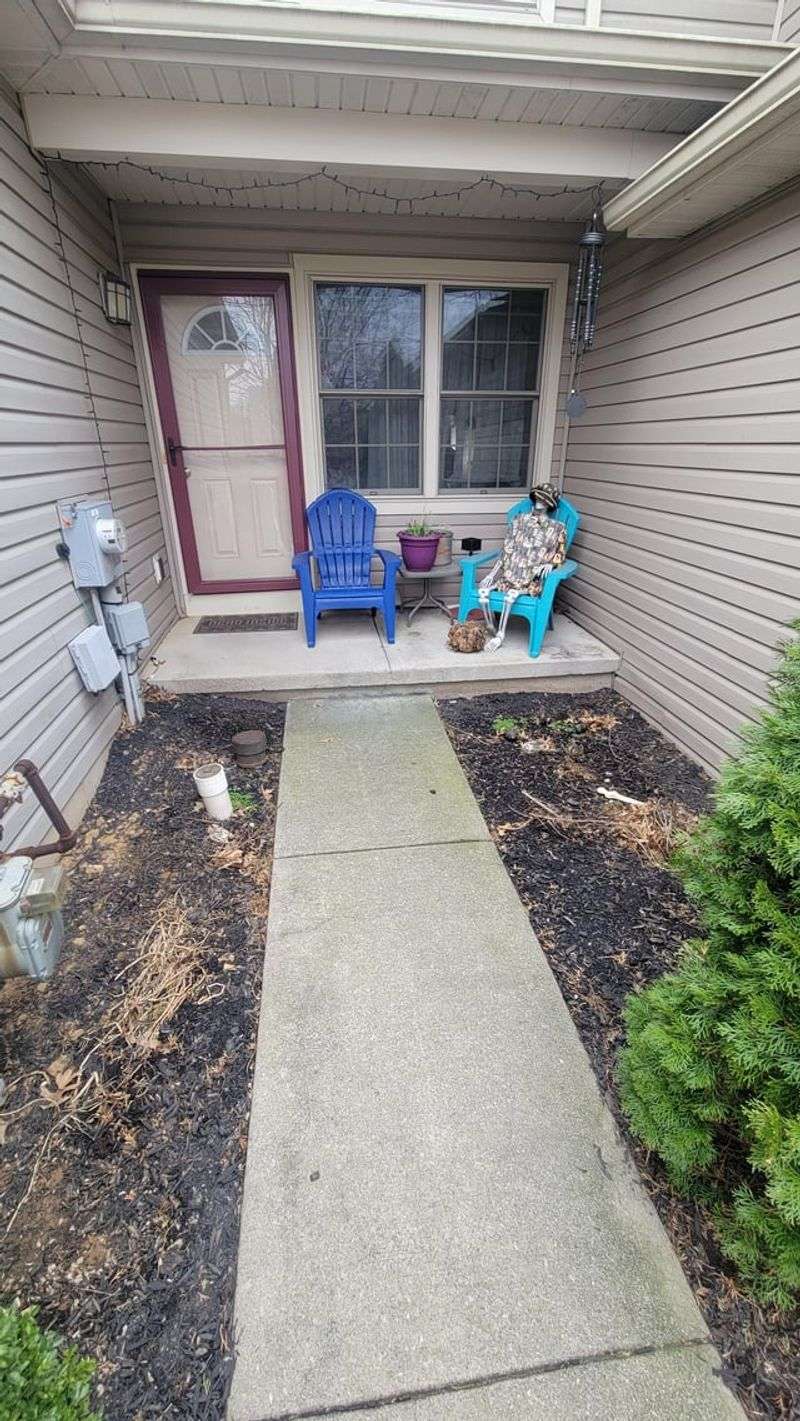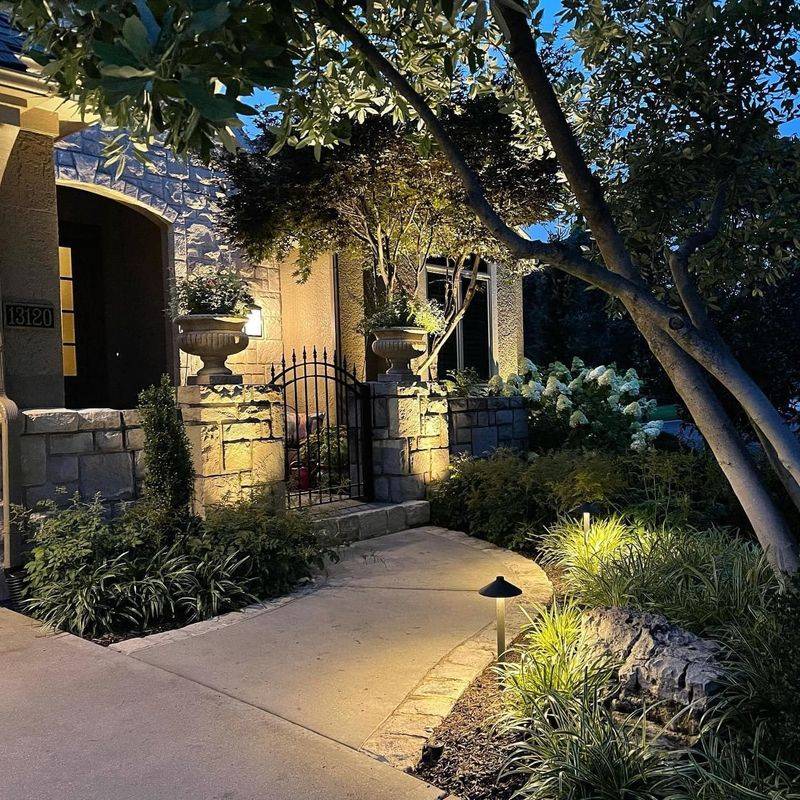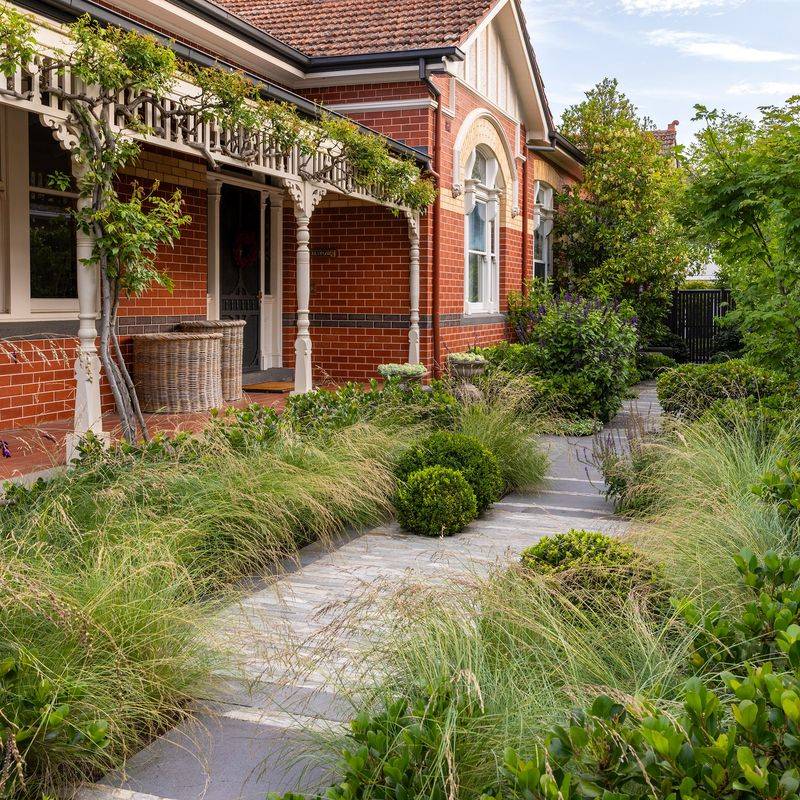Your front walkway says a lot before anyone even steps inside. I used to think mine was “fine”—until I realized the cracked pavers and weedy edges weren’t exactly giving off the warm welcome I wanted. It’s amazing how small details along that path can shape someone’s entire impression of your home.
Whether it’s guests coming for a summer BBQ or delivery folks dropping packages, that stretch of sidewalk leaves a mark. A cluttered, uneven, or poorly lit walkway can unintentionally send the wrong message—even if the inside of your home is spotless.
Luckily, fixing it doesn’t require a full renovation. A few thoughtful changes—clean lines, tidy plants, and maybe a fresh coat of paint on the steps—can totally transform the vibe and boost your home’s charm from the curb.
1. Cracked Concrete Surfaces
Those spiderweb fractures running through your concrete walkway aren’t just eyesores – they’re tripping hazards waiting to happen. Water seeps into these cracks during freeze-thaw cycles, making them worse each season.
For hairline cracks, concrete patching compounds from the hardware store work wonders when carefully applied according to package directions. They dry quickly and can be color-matched to your existing walkway.
If your walkway resembles a jigsaw puzzle more than a path, consider it an opportunity. I replaced my disaster of a concrete path with stepping stones surrounded by decorative pebbles for less than I expected to pay.
2. Overgrown Edge Vegetation
Plants gone wild along your walkway create that abandoned property vibe nobody’s aiming for. When greenery spills over edges, it narrows your path and catches on clothing as guests walk by.
Pull out the pruning shears and create a clean 2-3 inch buffer zone between plants and walkway edges. For persistent creepers, consider installing simple metal or plastic edging that creates a physical barrier while looking intentional.
My neighbor transformed her walkway in a single afternoon just by trimming back the encroaching grass and defining the edges. The path suddenly looked twice as wide without changing a single paver.
3. Mismatched Or Broken Lighting
Nothing screams neglect like a row of pathway lights where half are broken, tilting sideways, or completely different styles. This haphazard approach creates visual confusion rather than the welcoming glow you want.
Rather than replacing fixtures one at a time (which leads to the mismatched look), invest in a complete matching set. Solar options have improved dramatically and don’t require complex wiring – just push them into the ground and let sunshine do the rest.
When selecting new fixtures, choose styles that complement your home’s architecture. Victorian-inspired lanterns look charming with traditional homes, while sleek, low-profile lights work beautifully with modern designs.
4. Weed-Filled Joints Between Pavers
Those persistent green sprouts pushing through your paver joints aren’t just unsightly – they’re actively destabilizing your walkway by widening gaps and creating uneven surfaces as their roots expand.
Pour boiling water directly on weeds for an immediate eco-friendly solution. For longer-term control, sweep polymeric sand into the joints after removing existing weeds. When moistened, it forms a weed-resistant barrier while still allowing necessary drainage.
A landscape designer friend taught me to apply white vinegar with a small paintbrush directly to stubborn weeds. Works like magic without the harsh chemicals, and costs pennies compared to commercial weed killers.
5. Boring Straight-Line Design
A rigid, straight-as-an-arrow walkway often feels institutional rather than inviting. The military precision might seem neat, but it lacks the character that makes visitors feel welcome approaching your home.
Soften edges by allowing low-growing plants like creeping thyme or ajuga to slightly spill over in strategic spots. These create living edges that bring movement and interest without becoming trip hazards.
Consider adding oversized planters at wider sections to create gentle curves or gathering points. We placed two large ceramic pots with dwarf evergreens midway along our formerly straight path, and it immediately felt more designed and intentional.
6. Stained Or Discolored Surfaces
Those rusty orange streaks and dark mildew patches make even expensive materials look cheap and neglected. In regions with iron-rich water or lots of overhanging trees, stains develop quickly on light-colored walkways.
For most surfaces, a pressure washer on low setting works wonders. If stains persist, try a walkway-specific cleaner matched to your surface material – what works on concrete might damage natural stone.
After cleaning my badly stained concrete path, I applied a penetrating sealer that repels water and prevents new stains from setting. Two years later, it still looks freshly installed after just an occasional rinse with the garden hose.
7. Poor Drainage Creating Puddles
Water pooling on your walkway isn’t just annoying during rainstorms – it creates slip hazards, promotes algae growth, and damages the walkway material itself through freeze-thaw cycles.
The simplest fix involves adjusting the slope. Add a thin layer of compacted gravel beneath affected sections to create a slight grade that channels water away from your home and into garden areas where it’s beneficial.
For persistent trouble spots, consider installing a small French drain alongside the walkway. The neighbor who copied my drainage solution was amazed at how this simple trench filled with gravel eliminated the small pond that formed by her front steps every spring.
8. Lack Of Definition Between Walkway And Lawn
When grass gradually encroaches until your walkway becomes a vague suggestion rather than a defined path, it creates a messy, unintentional appearance that diminishes your home’s curb appeal.
Edging is the answer. Metal, stone, or brick borders create that crisp separation that looks professionally maintained. Even simple plastic edging hidden just below the grass line dramatically improves the visual impact.
After installing black metal edging along my concrete path, several neighbors asked if I’d replaced the entire walkway. The clean lines made that much difference, and the whole project took just one Saturday morning with basic tools.
9. Outdated Or Faded Walkway Material
That pink-tinted concrete popular in the 90s or those dated mosaic patterns can make your home look stuck in a time warp. Faded colors and worn finishes broadcast neglect rather than thoughtful maintenance.
Concrete stains and tinted sealers offer affordable updates without demolition. Modern gray tones and subtle earth colors instantly modernize older walkways while hiding minor imperfections and discoloration.
When my terracotta-colored concrete became an eyesore, I applied a charcoal-tinted sealer that transformed it completely. Visitors now comment on the “new” walkway that actually dates back 25 years – the color change was that dramatic.
10. Inadequate Width For Comfortable Passage
Skinny walkways force people to walk single-file and make carrying items awkward. When two people can’t comfortably walk side-by-side, your path feels unwelcoming and impractical.
Designers recommend a minimum 42-inch width for primary walkways, with 48-60 inches being ideal. If complete replacement isn’t feasible, consider widening just the approach to your front door to create a more generous welcome area.
One clever homeowner I know extended her narrow concrete path by adding 12-inch pavers along each side. This created a wider walkway without removing the original concrete – a budget-friendly compromise that dramatically improved functionality.
11. Too Much Competing Decoration
When garden gnomes, solar lights, decorative rocks, and ornamental flags all crowd your walkway edges, the visual chaos overwhelms visitors before they even reach your door. This clutter creates a disorganized impression regardless of your home’s actual condition.
Edit ruthlessly. Select just one or two statement pieces that truly enhance the walkway experience, and relocate the rest to garden beds or backyard spaces where they won’t compete for attention.
The transformation can be startling. After removing most of the decorative items flanking her path, my sister’s walkway suddenly appeared twice as elegant. The remaining stone lantern became a true focal point rather than just another object in a crowd.
12. Uneven Or Settling Pavers
Those dips and rises in your paver walkway aren’t just unsightly – they’re tripping hazards waiting to catch unsuspecting visitors. Over time, ground settling creates an uneven surface that collects water and looks neglected.
The fix is straightforward but requires some muscle. Remove affected pavers, add or remove base material to level the area, then reinstall the pavers. Pros use a rubber mallet to ensure each paver sits perfectly flush with its neighbors.
After leveling the settled sections of my paver path, I was surprised how much more professional the entire front approach looked. What I thought would be a minor improvement actually transformed the whole entrance experience.
13. Inappropriate Scale Of Plants
Those cute little shrubs you planted years ago may now be swallowing your walkway whole. Oversized plants force visitors to navigate an obstacle course just to reach your door, while undersized specimens look temporary and unestablished.
Choose varieties that maintain appropriate proportions at maturity. For existing overgrown plants, don’t be afraid to remove and replace them with more suitable options – sometimes starting fresh is easier than fighting constant pruning battles.
The right-sized plants make all the difference. When we replaced our massive yews with compact boxwoods, our walkway suddenly felt like it belonged to our house again instead of being lost in a mini-forest.
14. Absence Of Personality Or Focal Points
A purely functional walkway without any distinctive elements feels like an afterthought rather than an intentional design feature. Without focal points, your path becomes forgettable rather than enhancing your home’s character.
Create at least one moment of interest along the journey to your door. This could be an unusual plant, a small sculpture, or a change in paving pattern – anything that adds a touch of personality without overwhelming the space.
The brass address numbers we embedded into our walkway cost less than $50 but completely transformed the approach to our front door. Visitors always comment on this unique touch that makes our entrance distinctly ours.
15. Harsh Transitions Between Materials
Abrupt changes where your walkway meets the driveway, porch, or garden areas create visual disconnection. These jarring transitions make your landscape feel pieced together rather than thoughtfully designed.
Soften material changes by overlapping elements. Allow groundcover plants to spill slightly across boundaries, or use the same border material on both sides of a transition to visually connect different areas.
When renovating, our designer suggested continuing the same brick border from our concrete walkway along the edge of our porch steps. This simple continuity trick made the whole front approach feel cohesive despite using different primary materials.
16. Neglected Seasonal Maintenance
Fallen leaves, winter salt residue, and spring mud all make your walkway look temporarily abandoned. These seasonal maintenance lapses suggest the entire property might be similarly neglected, even when that’s not the case.
Create a simple seasonal checklist. Spring calls for thorough cleaning, summer requires weed control, fall demands prompt leaf removal, and winter needs safe de-icing that won’t damage your walkway materials.
I keep a basic cleaning kit by the front door – just a broom, salt-free ice melt, and a small weeding tool. This makes it easy to address small issues before they become eyesores, taking just minutes rather than becoming weekend projects.
17. Poor Nighttime Visibility
Dark, shadowy walkways aren’t just unwelcoming – they’re genuinely hazardous for visitors arriving after sunset. Without adequate lighting, even the most beautiful path becomes invisible precisely when guidance is most needed.
Layer your lighting approach. Low path lights provide ground-level illumination, while downlighting from trees or eaves creates a more natural moonlight effect without harsh glare or light pollution.
After installing motion-sensor lights that automatically brighten when someone approaches, our evening guests stopped using phone flashlights to navigate to our door. The warm welcome begins the moment they turn into our driveway rather than after they find the doorbell.
18. Inconsistency With Home’s Architectural Style
A sleek, modern walkway leading to a traditional colonial home creates immediate visual discord. This mismatch makes even high-quality materials look like poor choices when they contradict your home’s established character.
Take design cues from your home’s permanent elements. Brick homes often pair beautifully with clay pavers, while contemporary architecture works well with clean concrete or natural stone in simple patterns.
The most successful walkways feel like they were always meant to be there. When we replaced our generic concrete path with bluestone that echoed our home’s slate roof accents, the entire property suddenly felt more cohesive and intentionally designed.

